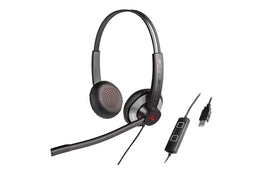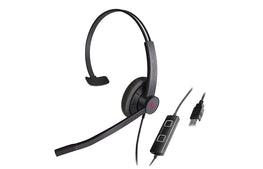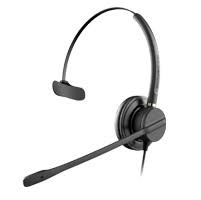Speech-to-Text Specialist
29-04-2024
Medical Transcription: Your Options from Traditional to AI-Enhanced
Next Generation "AI Assisted" Medical Transcription
Medical transcription is a critical component of healthcare, ensuring that patient interactions and treatment decisions are accurately documented. Whilst the field has seen various evolutionary stages, from manual typing to digital recorders, the integration of Artificial Intelligence (AI) and speech recognition with human oversight presents the most advanced and reliable method currently available. This article explores the entire spectrum of medical transcription methods, emphasising a sophisticated approach known as “"AI Assisted Transcription”, which marries AI, speech-to-text and transcriptionist verification to achieve unmatched efficiency and accuracy at the lowest cost possible.

FAQs
- What is medical transcription?
- What happened to WinScribe?
- How does AI Assisted medical transcription work?
- What are the benefits of AI and medical typist combined transcription?
- How to choose the best medical transcription software/service?
What is Medical Transcription?
Medical transcription is a critical component in healthcare, ensuring that detailed patient interactions and treatment decisions are accurately recorded into Electronic Healthcare Records systems (EHRs). Whilst speech-to-text transcription has seen various evolutionary stages, from manual medical typing to digital enhancements, the integration of AI and speech recognition with human oversight, presents the most advanced and fastest method currently available. This article explores the entire spectrum of medical transcription methods, emphasising a sophisticated approach known as
"AI Assisted Transcription”, which marries AI, speech-to-text and manual verification/editing to achieve unmatched low pricing, speed and accuracy.
What happened to Winscribe?
Winscribe, a once-leading medical transcription service, has reached end-of-life according to Nuance, ceasing updates and support. This may pose risks such as security vulnerabilities for hospitals and clinics. Amplify+, has recently emerged as a new cloud based alternative. It’s a cloud-based, AI-enhanced system that offers advanced speech recognition and seamless integration with healthcare systems. Amplify+ provides scalable transcription solutions, ensuring continued high standards in medical documentation and care coordination, making it an ideal replacement for Winscribe. Amplify is more affordable and easier to use and you can easily transition to Amplify+ from WinScribe by contacting Voice Recognition Australia today.
Traditional Medical Transcription & Typing
Historically, medical transcription involved physicians recording their notes via a digital (or tape) recorder, which were then typed into physical documents by professional medical typists. This method, whilst functional, was fraught with delays and errors, depending heavily on the typist's training, accuracy and speed. Traditional transcription is no longer viable due to its slow speed, high cost and lack of trained medical typists. Cloud based AI-Enhanced speech recognition integrated medical transcription systems are vastly superior and cheaper.
Digital Dictation Voice Recorders
The advent of digital dictation offered improvements over tape recording systems, providing clearer audio quality and easier processing of recordings. Digital dictation devices from Olympus, Philips and Sony allowed for more straightforward archival and retrieval of dictations, though they still required manual transcription and typing. The audio quality improved but the slow speed, high cost and lack of staff made digital dictation redundant by 2020. However, noting that many Doctors still use Olympus and Philip voice recorders, the new Amplify+ system supports web-browser uploading of digital audio for processing automatically by AI enhanced speech recognition built into the new Amplify+ cloud service in Australia/New Zealand.
Speech to Text Software
Speech recognition technology marked a significant advancement by automatically translating speech-to-text. Despite speeding up the transcription process, this technology often struggled with accuracy, particularly with varied accents. However recent improvements in artificial intelligence have dramatically improved speech recognition. For example, Dragon Medical One is the current state-of-the-art and advanced front end Speech Recognition - that means live dictation - where a doctor speaks directly into the EHR database. DMO is a fantastic system, however many doctors who are doing hospital ward rounds are unable to access a computer and therefore cannot use Dragon Medical One - because it is desktop PC-based only and therefore not usable on a mobile device like an iPhone or Android smartphone. This limits DMO's use to desktop computers.
With rapid advances in AI, back-end speech recognition - where the Doctor speaks into a mobile phone, the audio recorded and then processed later on in the cloud automatically - is becoming dominant. Backend speech recognition is far easier to use and the doctor does not need to access a computer or remember to do punctuation, as the latest speech recognition systems are AI enhanced and will automatically handle punctuation, formatting and grammar. In other words, the doctor simply presses a button, speaks and recording is automatically sent preformatted and ready for a simple quick check and edit by an optional typist. The new AI powered Amplify+ system supports DMO, Mobile phones and typist verification.
AI-Enhanced Medical Transcription Services
Amplify+ is a new Next-Generation AI-enhanced cloud transcription service - using technology from Nuance and Microsoft - `that leverages advanced algorithms to automatically transcribe medical dictations. Amplify's AI systems continuously improve, delivering more accurate transcriptions over time. Amplify+ features automatic punctuation, grammar, and spelling correction, can format dictations into specific document fields, and format drug names correctly. The transcriptions are then securely integrated into your hospital or clinics medical records system automatically. Combined with a typist for accuracy verification after playback, Amplify+ offers a fast, precise, and cost-effective solution for medical transcription. There is no current system available in the world that can match the advancements that Amplify+ delivers to medical professionals in Australia and New Zealand.

How does it work? Medical Transcription with AI and Human Oversight
The next-generation in medical transcription technology is a secure cloud system that synergises AI-enhanced speech recognition with human oversight—a process often referred to as co-sourcing. However, this system transcends traditional co-sourcing by integrating several key components:
1. AI-Driven Speech Recognition: Initially, doctors dictate their notes on their smart-phones, which are captured directly by speech-to-text software in the secure cloud automatically. A simple and fast process for Doctors. Dragon Medical One is also available for PC based dictation.
2. AI Reformatting and Error Correction: Following the initial transcription, an AI medical system reviews the text to format, punctuate, and correct any spelling errors (and drug names) automatically. This step significantly reduces the workload for subsequent human medical typist review. This AI is capable of understanding and converting complex medical terminology and varied speech patterns/accents into text with a high rate of accuracy.
3. Manual Human Typist Verification: Despite the sophistication of AI, the human element remains crucial. Your medical typist reviews the AI-generated text whilst listening to the original audio, ensuring the transcription's accuracy and completeness. This greatly improves the personal productivity of the individual typist as they are no longer typing the medical record. This results in massive improvements in personal productivity for the typist and a huge lowering of costs. The Doctor can optionally review/approve their own dictation or send to a typist immediately for review. This can be an in-house local typist, or you can push any surge transcription requirements to the Amplify+ team of specialist typists for review - greatly increasing your organisation capacity during busy periods - and reducing turn-around times dramatically. Amplify+ turn-around times are typically under 12 hours or less.

4. Doctor's Final Approval: The document is sent back to the doctor for final review and approval, ensuring that the transcription meets all clinical requirements. The Doctor has the final sign off on and this approval captured by a sophisticated digital tracking system. The Doctor can also approve their own dictation immediately if they are using Dragon Medical One or using the smart phone application.
5. Auditing, Logging and Tracking: Every step in the process is logged and tracked, ensuring accountability and facilitating audits or reviews when necessary. Even months later, an administrator can review the audit path of how the document came into being. Including reviewing the original source audio from the doctor. This cloud based tracking system ensures the integrity of the transcription process and highlights areas for improvements in transcription efficiency - via simple webpage.
How to choose the best medical transcription service?
By comparing traditional methods with this new "AI Assisted Transcription" model from Amplify+, the advantages become clear. While traditional and purely digital methods offer certain limited benefits, they cannot match the AI-Enhanced transcription service, low cost, simplicity, security and sub-12 hour turn-around times.
This Next Generation "AI Assisted" Medical Transcription system Amplify+, leverages the speed and learning capabilities of AI whilst retaining the critical oversight of human typists, creating a system that is not only efficient, but also highly accurate and inexpensive. This method provides a secure,
cost-effective and scalable system, suitable for medical clinics and large hospitals.
As a cloud product, Doctors can dictate securely from anywhere at anytime with Amplify+ using their iPhone or Android phone/tablet. Typists can login from home, work or any other location to complete their manual review of the documents and audio. Its simple, easy to use and highly automated.
Conclusion
The only system that has all of the above capabilities and is still affordable, is the new Amplify+ medical transcription cloud by Prescribe Digital and Voice Recognition Australia.
This advanced cloud system can be trialed and deployed in your hospital or clinic at no risk. Fill out this form today and one of our medical transcription integrators will contact you to discuss your unique requirements.
Call 1300 255 900 today.






